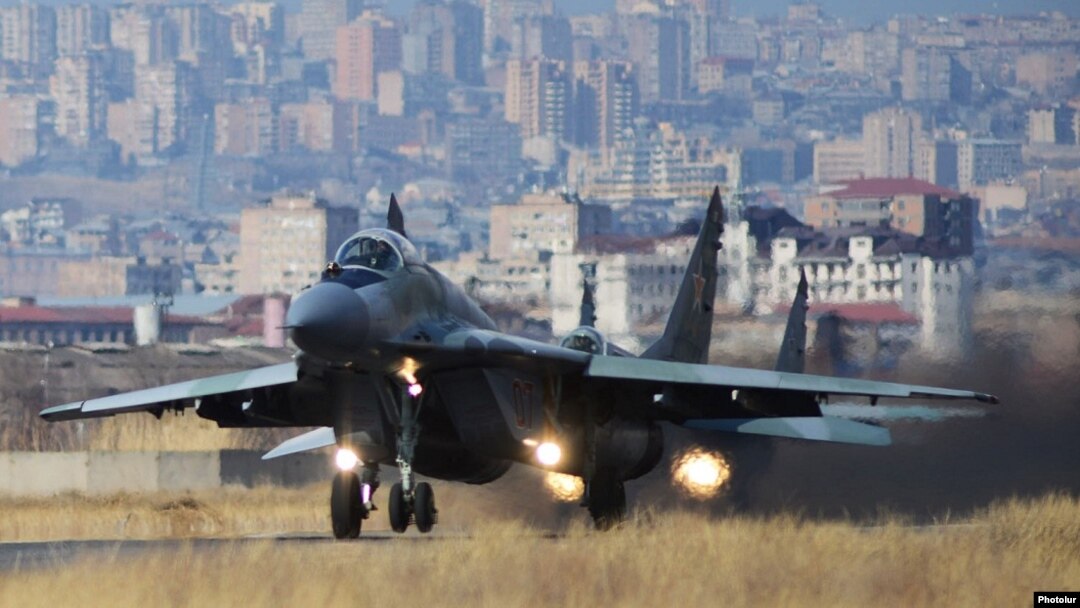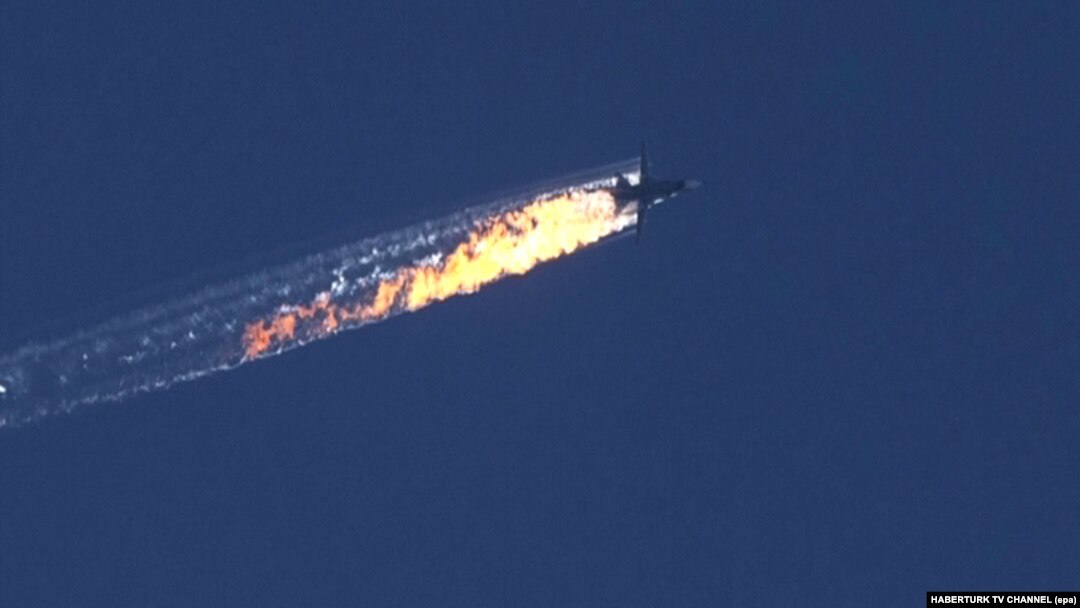In a show of support for its main military ally, Armenia condemned on Wednesday Turkey’s downing of a Russian warplane, saying that it undermined international efforts to defeat terrorist groups operating in Syria.
Defense Minister Seyran Ohanian at the same time urged the international community to prevent a further escalation of Russian-Turkish tensions which analysts believe would be fraught with major security risks for Armenia.
“I think that at a time when the international community is concentrating its efforts on a fight against international terrorism it can be said that it was a direct blow to those efforts,” Ohanian said in what was the first Armenian reaction to Tuesday’s incident near the Syrian-Turkish border.
The Russian Su-24 bomber was reportedly shot down by a Turkish F-16 fighter jet after attacking rebel forces in a northern Syrian region bordering Turkey. Ankara insists that the warplane was destroyed because of violating Turkey’s airspace, a claim strongly denied by Moscow.
Speaking just hours after the incident, Russian President Vladimir described it as a “stab in the back” carried out by “accomplices of terrorists” and said it will have “serious consequences” for Russian-Turkish relations.
The incident and the resulting recriminations have raised fears that Armenia, which hosts a Russian military base deployed along its closed border with Turkey, could be drawn into a potential military confrontation between the two regional powers. Some Russian pro-government politicians and pundits have called on the Kremlin to reinforce that base with more advanced weaponry as part of its broader response to the Su-24’s downing.

Armenia - A Russian MiG-29 fighter jet takes off from a military airport in Yerevan, 14Mar2014.
The base is already equipped with 18 or so MiG-29 fighter jets, a similar number of attack helicopters and S-300 air-defense systems. A perceived security threat from Turkey has long been the main official rationale for the Russian military presence in Armenia.
According to Armenia’s civil aviation authority, Turkish military helicopters twice violated the Armenian airspace in early October, just days after Ankara accused Russian warplanes of straying into Turkish territory from Syria. Yerevan chose not to lodge formal protests with Ankara.
Ohanian would not say whether Armenian army units close to the Turkish border and the Russian troops stationed in Armenia have now been put on high alert. “We have a joint operational and combat planning with Russia and we carry out joint actions our within the framework of that planning,” he said vaguely.
“We are strategic partners with the Russian Federation and that defines the nature of our relationship with the Russian Federation,” Ohanian stressed in the context of the Russian plane’s downing. “I think we should wait and see further developments. [World] leaders will make appropriate decisions.”
“I think the international community should now also make efforts to prevent escalations,” he added at a joint news conference with Serbia’s visiting Defense Minister Bratislav Gasic.
The Armenian government has been very critical of Turkey’s role in the Syrian civil war. It pointed the finger at Ankara after Islamist rebels, among them members of the Al-Qaeda-affiliated Al-Nusra Front, captured the Armenian-populated Syrian town of Kessab and displaced its 2,000 residents in March 2014. Foreign Minister Edward Nalbandian wrote to UN Secretary-General Ban Ki-moon at the time, claiming that the “terrorist groups” attacked Kessab “from the territory of neighboring Turkey.”
The Turkish Foreign Ministry rejected the Armenian claims as “shameful slander.”


